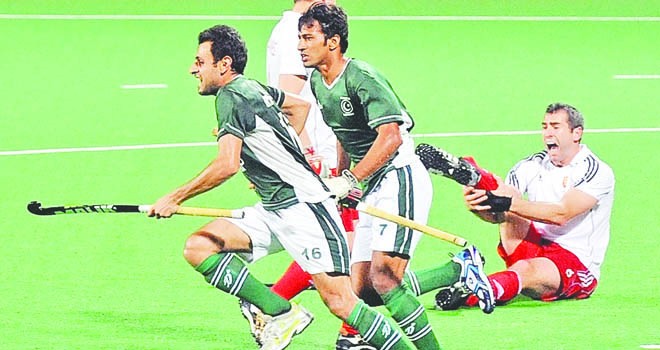

Last year, hockey which was once counted among the core sports in the Olympic programme, almost got axed from the Summer Games. It was among three sports about which the world Olympic chiefs had a discussion as they planned to drop one from the Games. The other two sports were wrestling and modern pentathlon. Fortunately, hockey managed to save its Olympic spot by a narrow margin.
But it was clear that if the sport wanted to keep its spot in the Olympic Games on a long-term basis, then the international hockey chiefs will have to find ways and means to make it more attractive for global TV audiences. The thing is that hockey cannot afford to lose its Olympic spot. After all it is only during the Olympics after every four years that hockey manages to make the headlines, at least in some countries. For hockey, the Olympics are much more important that the World Cup or the Champions Trophy.
Last week, one saw that the International Hockey Federation (FIH) is serious about taking steps to avoid a possible International Olympic Committee (IOC) axe.
For better or for worse, the FIH has decided to bring about several changes to the structure of the game. The new system will have 60-minute games broken into four quarters and the introduction of 40-second time-outs, rather than the current format of two 35-minute halves with a ten-minute interval.
The new format has been trialled in both the Euro Hockey League and Hockey India League and will now be implemented at the upcoming Champions Trophy, World League Round Two, World League semi-final and final, all continental Olympic qualifying events as well as Rio 2016.
Under the new structure, teams will compete in four 15-minute quarters and after the first and third quarters each team will have a two-minute break, with a 10-minute break at half-time.
The changes could be seen as a reaction to last year when hockey was among the bottom three sports from which the International Olympic Committee’s ruling Executive Board decided to vote off the programme after Rio 2016.
Wrestling was chosen but hockey got three votes, the same as modern pentathlon.Wrestling was later given a reprieve following a successful campaign but the fact hockey was even considered for the axe shook many in the sport.
While the duration of the match has been reduced by 10 minutes, the FIH claims that actual playing time will be maximised with the introduction of 40-second time-outs following the award of a penalty corner and the scoring of a goal.
Other changes include the implementation of 40-second time-outs following both penalty corner awards and the scoring of a goal. Both stoppages ensure that the 60-minute game time is maximized for actual play and not consumed with penalty corner set up or other dead time when the ball is not in play.
The new format is considered to result in a higher intensity, paced and more exciting game of hockey. It will enable event organizers and broadcasters to develop more engaging fan experiences, both at the venue, on TV and online.
With an increase in opportunity to review highlights, explain the game and add colour to the play, people from all over the world can have a better lens on the exciting sport of hockey.
Following the already-existing formats of several other sports such as basketball, American football and netball, the FIH Executive Board has decided to move hockey into a four-quarter format. Overall game time will move from 70 minutes (previously two 35-minute halves) to a 60-minute game with four 15 minute quarters where there is a time-out for penalty corner setup and goals.
After the first and third quarters, each team will have a two-minute break, while the existing 10-minute half time will remain unchanged.
Supplementing the new 60-minute regulation, FIH also announced the implementation of a 40-second time-out when a penalty corner is awarded. Additionally, a 40 second time out will also be added when a goal has been scored. Both time-outs allow for on-field team celebration time, video replays and analysis for televised matches, as well as additional opportunities to engage fans.
The time-outs ensure that the new 60-minute format is primarily actual playing time and eliminates the dead time associated with penalty corner set up while allowing for teams to enjoy their goal celebrations.
The FIH claimed the purpose of the changes, which mirror sports such as basketball, American football and netball, is to improve the flow and intensity of the game and will enable event organisers and broadcasters to develop more engaging fan experiences, both at the venue, on television and online.
"The decision demonstrates our commitment to fan engagement," said FIH President, Leandro Negre.
"With the additional breaks, fans will have the opportunity to enjoy more replays and be more engaged with the event, whether in the stadium or watching from a far, while hockey commentators will be allowed more time to provide sport analysis between plays.
"In addition, coaches and players will see improvement in their performance with the additional opportunities to re-hydrate and re-strategise."